Your Call
After clicking on each of today’s fourteen featured images (including one by student/friends Steve Shore and Vasili Chernishoff), be so kind as to leave a comment as to what you think are the two strongest images and the two weakest images. From where I sit, the former will be a challenge while the latter seems obvious. Or not. There is only one way to tell …
In the Last Blog Post
In the last blog post, I was absolutely ecstatic when I saw Steve Shore’s backlit image of the skimmer chick digging a scrape. My first pick, however, was clearly Vaisili’s predation image. It is miles better than any similar image that I have ever seen or created. The blue feather shafts, the wings and the two legs sticking out of the gull’s maw, and the chick’s fluffy white belly put this one far over the top for me.
If You Want to Improve Your Flight Photography …
If you wish to improve as a flight photographer, click on each image to enlarge it, study each carefully, consider the accompanying text, and then get yourself a copy of The Complete and Quintessential Guide to Photographing Birds in Flight.
What’s Up?
Nickerson Beach Park was closed on Thursday and again on Friday morning due to coastal flooding from Hurricane Erin. It was the 11th Category 5 storm in the Atlantic basin since 2016. On Thursday we headed to the beach in front of our AirBnB in Long Beach to photograph gulls early and then surfers. There were only a few of the former but more than a hundred of the latter as there were lots of 10-foot and taller waves.
Friday afternoon was excellent at Nick as the sun returned along with a SW wind. Saturday morning was wind against sun but we did quite well by arriving early and getting some nice backlit stuff. I was headed back to my SUV by 7:00am but found two good situations along the way that kept me busy for more than an hour. As is often the case on weekends, there were several folks with $20K+ of photo gear who had zero clue when it comes to creating decent bird photographs. Best of all, one of them told me how easy it is to photography birds as long as you have the best camera and the best lens. When I asked where I could see his images online he changed the subject. You gotta love it.
Today is Saturday 23 August and I am looking forward to another good afternoon with sunny skies and a SW wind. The beach at Nickerson is still mostly flooded but the water is receding. Whatever you opt to do today, I hope that you chose to have fun and be happy.
I still have room at the AirBnB for you on the last Nickerson Beach IPT:
Nickerson Beach 4-Day Instructional Photo-Tour (IPT): MON AUG 25 afternoon thru the morning session on FRI AUG 29, 2025: $2299.00.
If an item — a Delkin flash card or reader, a Levered-clamp FlexShooter Pro, or a Wimberley lens plate or low foot — for example, that is available from B&H and/or Bedfords, is also available in the BAA Online Store, it would be great, and greatly appreciated, if you would opt to purchase from us. We will match or beat any price. Please remember also to use my B&H affiliate links or to earn 3% cash back at Bedford by using the BIRDSASART discount code at checkout for your major gear purchases. Doing either often earns you free guides and/or discounts. And always earns my great appreciation.
Gear Questions and Advice
Too many folks attending BAA IPTs and dozens of photographers whom I see in the field and on BirdPhotographer’s.Net, are — out of ignorance — using the wrong gear, especially when it comes to tripods and more especially, tripod heads. And the same is true in spades when ordering new camera bodies or lenses. My advice will often save you some serious money and may help you avoid making a seriously bad choice. Please know that I am always glad to answer your gear questions via e-mail. If you are desperate, you can try me on my cell at 863-221-2372. Please leave a message and shoot me a text if I do not pick up.
Don’t Just Shoot: Learn
If you are interested in changing your life and becoming a better photographer by joining me on the Extended IPT at Sebastian Inlet for Ospreys and more (SEPT 25 to NOV 24, 2025), in San Diego for Pacific-race Brown Pelicans and more (JAN 6 to FEB 2, 2026), or for Roseate Spoonbills at Stick Marsh (March 2026), please e-mail for dates, rates, terms, and additional information. Or shoot me a text to 863-221-2372. Some offerings include options for shared AirBnB lodging and meals. Ground transportation during your stay is a possibility at times.
|
|
|
The title says it all. Purchase your copy here. The Complete and Quintessential Guide to Photographing Birds in Flight
|
The Complete and Quintessential Guide to Photographing Birds in Flight: $99.00
You can check out four sample pages in the blog post here.
I had long dreamed of becoming a great flight photographer. When using dSLR gear, making sharp images was a huge problem. Most of the time, the camera bodies simply were not up to snuff. Things have changed dramatically with mirrorless technology. The high-end mirrorless camera bodies now feature science fiction-like autofocus systems and frame rates of 30, 40, and even 125 fps. Nowadays, getting the eye sharp is no longer a problem. The problem more often involves selecting the strongest image from a long series of sharp images.
The truth, however, is that there is a lot more than owning a Canon EOS R1, a Nikon Z9, or a Sony a-1 ii to consistently creating great photographs of birds in flight. Some of the biggest factors to success include gear choice, shooting strategies, and understanding the importance of sky conditions and wind speed and direction. Once you have the techniques and technical aspects down pat and can routinely create sharp images, learning the importance of flight poses, wing positions, backgrounds, and subject placement and image design enable you to create and then select superb flight images. And you guessed it, each of those topics and tons more are covered in detail in The Complete and Quintessential Guide to Photographing Birds in Flight.
The guide consists of 267 pages and 21,013 words. There are 82 illustrative photos scattered throughout the text, two screen captures, and a 112-image gallery that includes examples created by Canon, Nikon, and mostly Sony gear. As seen above, each of the 194 inspirational photos is labeled with an educational caption.
You can purchase your copy here for $99.00.
Arash Hazeghi
Arash Hazeghi, Ph.D. is a principal electron device engineer. He received his Ph.D. degree in Electrical Engineering in 2011, from Stanford University, Stanford, California. His pioneering research on Carbon Nanotubes has been cited many times. In the past decade, Arash Hazeghi has been a major contributor to the research and the development of some of the most cutting-edge technologies introduced by Silicon Valley’s most reputable names including SanDisk, Intel and Apple.
More relevant here is that he is widely recognized as one of the world’s best birds in flight photographers. He specializes in raptors and the technical aspects of bird photography.
|
|
|
Flight photography is a skill that can be studied, practiced, and learned. Learn to get better in The Complete and Quintessential Guide to Photographing Birds in Flight |
The Complete and Quintessential Guide to Photographing Birds in Flight
By Arash Hazeghi Ph.D., and Arthur Morris/BIRDS AS ART
What you will learn (about):
-
1- Weight and handholding super-telephoto lenses.
2- Weight and handholding intermediate telephoto and telephotos zoom lenses.
3- Choosing the right flight photography lens or lenses for you.
4- The importance of focal length for flight photography.
5- The importance of lens speed (the maximum aperture for flight photography.
6- Choosing between fixed focal lengths and zoom lenses for flight photography.
7- The importance of AF speed and performance for flight photography.
8- Handholding tips and techniques.
9- Shooting flight off a tripod with the Levered-clamp FlexShooter Pro.
10- Flight poses and wing positions.
11- Why artie changed his mind about the 400mm f/2.8 lenses for flight and more.
12- The advantages and disadvantages of using teleconverters for flight photography.
13- Why to stay away from off-brand lenses.
14- Understanding the importance of wind direction and speed for flight photography.
15- The relationship between sky conditions and wind direction and how it affects flight photography.
16- Creating flight silhouettes in wind-against-sun conditions.
17- The importance of being on sun angle for flight photography (and avoiding harsh shadows).
18- Tips on doing flight photography in cloudy, foggy, or overcast conditions.
19- About the direction of light in cloudy, foggy, or overcast conditions and how it affects flight photography.
20- How your understanding of bird behavior can dramatically improve your flight photography.
21- Tips on attracting birds for flight photography.
22- What to do when your camera’s AF system is temporarily blind.
23- The vital importance of pre-focusing.
24- How Direct Manual Focus can help you with flight photography.
25- The importance of shooting aggressively when doing flight photography.
26- Everything that you need to know with regards to rest positions for flight photography.
27- The importance of getting low when doing flight in many situations.
28- Getting the right exposure when doing flight photography.
29_ Why to use Manual mode 95% of the time for flight.
30- Tips on finding the bird in the frame, acquiring focus, and tracking the bird in flight.
31- How to set and best utilize your lens’s image stabilization feature (and why).
32- Setting the focus range limiter switch on your flight lens or lenses.
33- To choose the best shutter speed for photographing birds in flight.
34- The vital importance of pre-focusing. And yes, this is so important that it is on the list twice.
You can purchase your copy here.
|
|
|
This image was created on 14 August 2025 by student/friend/multiple IPT veteran Steve Shore on a Nickerson Beach Extended IPT. Seated on dry sand, he used the handheld Sony FE 300mm f/2.8 GM OSS Lens (Sony E) with the Sony FE 1.4x Teleconverter, and The Latest Greatest Sony Flagship Body, the a1 II Mirrorless Camera. The exposure was determined by Zebras with ISO on the rear wheel: ISO 1000: 1/2500 sec. at f/4 (wide open) in Manual mode. RawDigger showed that the exposure was perfect. AWB at 6:18:33pm on a sunny afternoon. Wide/AF-C with Bird-Eye/Face Detection performed perfectly. Click on the image to enjoy the larger, inexplicably sharper high-res version. Image #1: Black Skimmer in flight with snapper (baby Bluefish) |
The Flight Photography Bar Has Been Raised
With dSLR gear, creating sharp-on-the-eye images of birds in flight was a big challenge. With today’s high end mirrorless gear, that is no longer the case. during every flight photography session, competent folks will create dozens if not hundreds of sharp images. Well let, razor sharp photos of birds in flight with pleasing wing positions are now a dime a dozen. For a flight image to stand out, your images need something special.
Like the baby bluefish in the bill of the skimmer in Image #1. When I was twelve or thirteen, I used to fish for (and catch) snapper blues off the docks near Flatbush Avenue and Avenue U. Until they built the Kings Plaza mall right there. Breaded and fried crispy the made a delicious snack.
|
|
|
This image was also created on 14 August 2025, this one by yours truly on a Nickerson Beach Extended IPT. Seated on dry sand, I used the handheld Sony FE 300mm f/2.8 GM OSS Lens (Sony E) with the Sony FE 1.4x Teleconverter, and The Latest Greatest Sony Flagship Body, the a1 II Mirrorless Camera. The exposure was determined by Zebras with ISO on the rear wheel: ISO 2500: 1/3200 sec. at f/4 (wide open) in Manual mode. RawDigger showed that the exposure was perfect. AWB at 7:30:29pm on a partly hazy sunny afternoon. Wide/AF-C with Bird-Eye/Face Detection performed perfectly. Click on the image to enjoy the larger, inexplicably sharper high-res version. Image #2: Black Skimmer braking during midair squabble |
So What’s Special About This One?
It is rare to see a bird braking in flight (as if it were landing) when it is involved in a midair squabble.
|
|
|
This image was created on 18 August 2025 by student/friend/multiple IPT veteran Vasili Chernishof on a Nickerson Beach Extended IPT. Seated on dry sand, he used the handheld Canon RF 100-300mm f/2.8 L IS USM lens (at 216mm) and the remarkable Canon EOS R1 Mirrorless Camera. ISO 2000: 1/2000 sec at f/2.8 (wide open) in Manual mode. AWB at 7:42:46am on a partly cloudy morning. Click on the image to enjoy the larger, inexplicably sharper high-res version. Image #3: Black Skimmer in attacking mode
|
Super Sharp!
When I first saw Vasili’s image, I was impressed by the incredible sharpness he achieved with his 100-300 zoom lens. I cropped this one from a horizontal image and added canvas both above and below.
With many of the young skimmers outside of the colony ropes, we would grab a seat with the wind and the light behind us (when possible). Several skimmers would fly at us halfheartedly and present some good opportunities with short fast lenses. The good news is that unlike the Common Terns, the skimmers will never make contact with your head. If you ever get way up north, beware of the Arctic Terns; they will leave you bloody and bowed when defending their eggs and chicks.
|
|
|
This image was also created on 18 August 2025 by yours truly on a Nickerson Beach Extended IPT. Standing at full height behind my Robus RC-5570 Vantage Series 3 Carbon Fiber Tripod/Levered-Clamp FlexShooter Pro-mounted Sony FE 600mm f/4 GM OSS lens with the Sony FE 1.4x Teleconverter, and The Latest Greatest Sony Flagship Body, the a1 II Mirrorless Camera. The exposure was determined by Zebras with ISO on the rear wheel: ISO 6400: 1/1600 sec. at f/5.6 (wide open) in Manual mode. RawDigger showed that the exposure was dead solid perfect. AWB at 7:27:48am on a then-cloudy morning. Wide/AF-C with Bird-Eye/Face Detection performed perfectly. Click on the image to enjoy the larger, inexplicably sharper high-res version. Image #4: Adult Black Skimmer chasing juvenile Laughing Gull |
Aerial Defense
Whenever a gull flies over the colony, one or more adult skimmers will take to the air to chase off the intruders that are always looking for a small chick as a snack, or a large chick as a meal. For Image #3 I replaced the attacking skimmer with one from another frame in the series.
|
|
|
This image was also created on 18 August 2025 by yours truly on a Nickerson Beach Extended IPT. Seated on dry sand I used the handheld (!) Sony FE 600mm f/4 GM OSS lens and The Latest Greatest Sony Flagship Body, the a1 II Mirrorless Camera. The exposure was determined by Zebras with ISO on the rear wheel: ISO 3200: 1/1600 sec. at f/4 (wide open) in Manual mode. RawDigger showed that the exposure was dead solid perfect. AWB at 56:08am on a still-cloudy morning. Wide/AF-C with Bird-Eye/Face Detection performed perfectly. Click on the image to enjoy the larger, inexplicably sharper high-res version. Image #5: Juvenile Common Tern banking in flight |
Juvenile Commons
August is a wonderful time to attempt to photograph young Common Terns in flight as nearly all the chicks are fledged and flying. Handholding the 600mm f/4 made it a bit easier to track and frame the bird as it turned in flight As I mentioned here recently, handholding the Sony 400-800mm lens so much has made me stronger. I can now handhold the big gun, the 600mm f/4 GM, for more than a few seconds.
|
|
|
This image was also created on 18 August 2025 by yours truly on a Nickerson Beach Extended IPT. Standing at full height, I used the handheld Sony FE 200-600mm f/5.6-6.3 G OSS lens (at 600mm) and the and The Latest Greatest Flagship Body, the Sony a1 II Mirrorless Camera. The exposure was determined by Zebras with ISO on the rear wheel: ISO 1250: 1/4000 sec. at f/6.3 (wide open) in Manual mode. RawDigger showed that the exposure was dead solid perfect. AWB at 6:32:21am on a sunny afternoon. Wide/AF-C with Bird-Eye/Face Detection performed perfectly. Click on the image to enjoy the larger, inexplicably sharper high-res version. Image #6: Black Skimmer adult in attack mode beginning dive |
One Out of Two Ain’t Bad!
On warm, windy afternoons, you will usually encounter many dozens of midair skimmer squabbles. The Sony 200-600 is the ideal skimmer fight lens as it enables you to zoom out to include both battling birds in the frame of zoom in to pick off a single bird. Here I zoomed to 600mm and created a full frame image of one of the combatants as it dived on the skimmer below it. The optimized image is a tiny crop.
|
|
|
This image was created on 19 August 2025 by yours truly on a Nickerson Beach Extended IPT. Seated on dry sand, I used the handheld Sony FE 300mm f/2.8 GM OSS Lens (Sony E) and The Latest Greatest Sony Flagship Body, the a1 II Mirrorless Camera. The exposure was determined by Zebras with ISO on the rear wheel: ISO 1250: 1/4000 sec. at f/2.8 (wide open) in Manual mode. RawDigger showed that the exposure was perfect. AWB at 7:09:46am on a cloudy morning. Wide/AF-C with Bird-Eye/Face Detection performed perfectly. Click on the image to enjoy the larger, inexplicably sharper high-res version. Image #7: Black Skimmer screaming in flight/head portrait |
Amazing Mirrorless Autofocus
I instructed both Steve and Vasili to keep shooting when a bird flew right at them and to try to keep the bird in the middle of the frame. Why? The autofocus systems on today’s best mirrorless camera bodies are capable of tracking a bird in flight so accurately that head shots of flying birds are realistically possible even as they approach point blank range.
|
|
|
This image was also created on 19 August 2025 by yours truly on a Nickerson Beach Extended IPT. Seated on dry sand, I used the handheld Sony FE 300mm f/2.8 GM OSS Lens (Sony E) and The Latest Greatest Sony Flagship Body, the a1 II Mirrorless Camera. The exposure was determined by Zebras with ISO on the rear wheel: ISO 800: 1/4000 sec. at f/2.8 (wide open) in Manual mode. RawDigger showed that the exposure was perfect. AWB at 7:09:46am on a then partly cloudy morning. Wide/AF-C with Bird-Eye/Face Detection performed perfectly. Click on the image to enjoy the larger, inexplicably sharper high-res version. Image #8: Black Skimmer in flight with Striped Killifish for a chick |
Full Frame AF Magic
It is hard to believe that the a-1 ii is capable of tracking a bird’s eye to the bottom of the frame even as the bird is practically filling the frame. When I was a Canon Explorer of Light, one of the original 55, I used to tell the folks in Lake Success that it would be great if we had an AF system that was science-fiction-like in its tracking accuracy. Today, the high end camera bodies from all three of the major camera manufacturer’s offer AF systems that come pretty darned close to what I always dreamed of.
|
|
|
This image was also created on 19 August 2025 by yours truly on a Nickerson Beach Extended IPT. Seated on dry sand, I used the handheld Sony FE 300mm f/2.8 GM OSS Lens (Sony E) and The Latest Greatest Sony Flagship Body, the a1 II Mirrorless Camera. The exposure was determined by Zebras with ISO on the rear wheel: ISO 800: 1/4000 sec. at f/4 (stopped down one stop) in Manual mode. RawDigger showed that the exposure was perfect. AWB at 7:19:08am on a then partly sunny morning. Wide/AF-C with Bird-Eye/Face Detection performed perfectly. Click on the image to enjoy the larger, inexplicably sharper high-res version. Image #9: Black Skimmer group in flight |
Group Flight Shots
The Black Skimmers at Nickerson will often blast off in large or small groups seemingly without rhyme or reason. My advice to Vasili was to frame a group, acquire focus, create a short series of images, and then repeat the process several times. When you are using a relatively large focusing area such as a zone or a group, or the full screen pattern, it is impossible to tell which bird in the group the system will focus on. Theoretically, it should always focus on the closest subject but don’t bet your life on that. And choosing a single point and attempting to get it on and keep it on a single bird while designing a pleasing image is 100% impossible. Thus, my advice to focus, frame, rinse and repeat. This strategy may rarely result in a pleasing motif as seen in Image #8 above.
|
|
|
This image was also created on 19 August 2025 by yours truly on a Nickerson Beach Extended IPT. Seated on dry sand, I used the handheld Sony FE 300mm f/2.8 GM OSS Lens (Sony E) with the Sony FE 1.4x Teleconverter, and The Latest Greatest Sony Flagship Body, the a1 II Mirrorless Camera. The exposure was determined by Zebras with ISO on the rear wheel: ISO 1250: 1/4000 sec. at f/4 (wide open) in Manual mode. RawDigger showed that the exposure was perfect. AWB at 7:38:28am on a then partly sunny morning. Wide/AF-C with Bird-Eye/Face Detection performed perfectly. Click on the image to enjoy the larger, inexplicably sharper high-res version. Image #10: Black Skimmer midair squabble |
The Real Deal
On this trip alone, I have created thousands of photographs of squabbling skimmers. I have the birds biting each other, kicking each other, and screaming at each other. Most of my successful images are the result of grabbing a bird from each of two images in a series and combining them. As with Image #3 above.
Only very rarely do you come up with an image where both birds are relatively sharp and nicely juxtaposed. Image #9 is one of those rare ones.
|
|
|
This image was created on 20 August 2025 by yours truly on a Nickerson Beach Extended IPT. Seating on damp sand behind my Robus RC-5570 Vantage Series 3 Carbon Fiber Tripod/Levered-Clamp FlexShooter Pro-mounted Sony FE 600mm f/4 GM OSS lens and The Latest Greatest Sony Flagship Body, the a1 II Mirrorless Camera. The exposure was determined by Zebras with ISO on the rear wheel: ISO 2500: 1/2500 sec. at f/4 (wide open) in Manual mode. RawDigger showed that the exposure was dead solid perfect. AWB at 9:27:55am on a cloudy morning. Wide/AF-C with Bird-Eye/Face Detection performed perfectly. Click on the image to enjoy the larger, inexplicably sharper high-res version. Image #11: Adult Black Skimmer shaking off water in flight after bathing |
|
|
|
This image was also created on 22 August 2025 at Nickerson Beach. Seated on damp sand, I used the handheld Sony FE 400-800mm f/6.3-8 G OSS lens (Sony E) (at 800mm) and The Latest Greatest Sony Flagship Body, the a1 II Mirrorless Camera. The exposure was determined by Zebras with ISO on the rear wheel: ISO 1250: 1/3200 sec. at f/8 (wide open) in Manual mode. RawDigger showed that the exposure was dead solid perfect. AWB at 6:39:37pm on a sunny afternoon. Wide/AF-C with Bird-Eye/Face Detection performed perfectly. Click on the image to enjoy the larger, inexplicably sharper high-res version. Image #12: Common Tern taking flight after bath |
Perfection Never Hurts a Flight Shot
Super sharp, pleasing image design, sweet light, gorgeous blue water, a perfect raised wing pose, a good head angle, and zero underwing shadows make this a very strong image. Is it good enough to make my top two?
Why would this image have been worse if I had gotten lower?
Once I spotted the situation, Sony’s Zebra technology enabled me to nail the exposure without have to make a test image. This was the first from I created after I sat down. You gotta love it.
|
|
|
This image was also created on 22 August 2025 at Nickerson Beach. Standing in a foot of water, I used the handheld Sony FE 400-800mm f/6.3-8 G OSS lens (Sony E) (at 434mm) and The Latest Greatest Sony Flagship Body, the a1 II Mirrorless Camera. The exposure was determined by Zebras with ISO on the rear wheel: ISO 2500: 1/2500 sec. at f/8 (wide open?) in Manual mode. RawDigger showed that the exposure was dead solid perfect. AWB at 7:15:41pm late on a sunny afternoon. Wide/AF-C with Bird-Eye/Face Detection performed perfectly. Click on the image to enjoy the larger, inexplicably sharper high-res version. Image #13: Juvenile American Oystercatcher in flight |
Pan Faster!
Universal advice for better flight photography: pan faster to keep the bird back in the frame. I panned too slowly when making this image so the bird was much too far forward in the frame. Thus, I needed to add canvas in front of the bird while cropping the image from behind. Me thinks that I did a masterful job with that …
|
|
|
This image was also created on 22 August 2025 at Nickerson Beach. Again, standing in a foot of water, I used the handheld Sony FE 400-800mm f/6.3-8 G OSS lens (Sony E) (at 800mm) and The Latest Greatest Sony Flagship Body, the a1 II Mirrorless Camera. The exposure was determined by Zebras with ISO on the rear wheel: ISO 2500: 1/2500 sec. at f/8 (wide open?) in Manual mode. RawDigger showed that the exposure was dead solid perfect. AWB at 7:20:11pm late on a sunny afternoon. Wide/AF-C with Bird-Eye/Face Detection performed perfectly. Click on the image to enjoy the larger, inexplicably sharper high-res version. Image #14: Juvenile Black Skimmer in flight |
Juvenile Skimmers in Flight
Photographing young flying skimmers is a challenge as the usually do not fly very high in the air and their flight is quite erratic. With the right conditions, we should have some chances on fledged flying Black Skimmers skimming along the edge of the surf. At times, they will skim the sand for practice.
Typos
With all blog posts, feel free to e-mail or to leave a comment regarding any typos or errors.

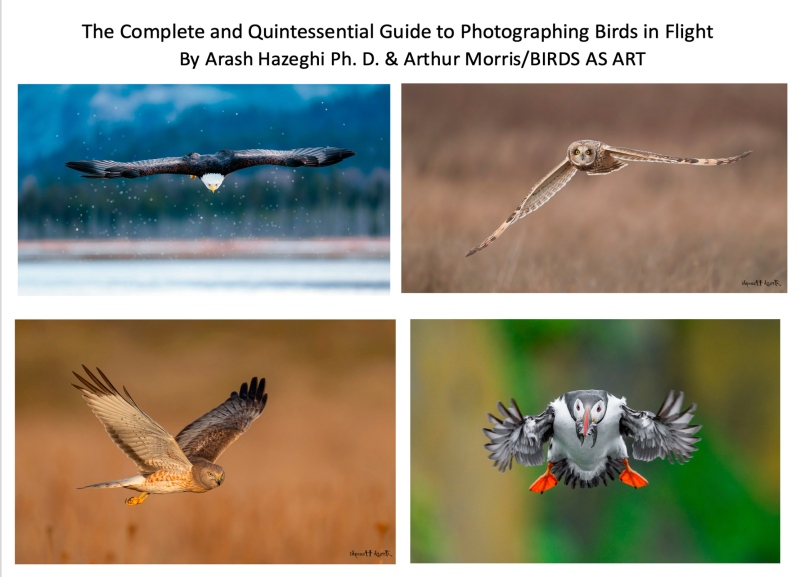
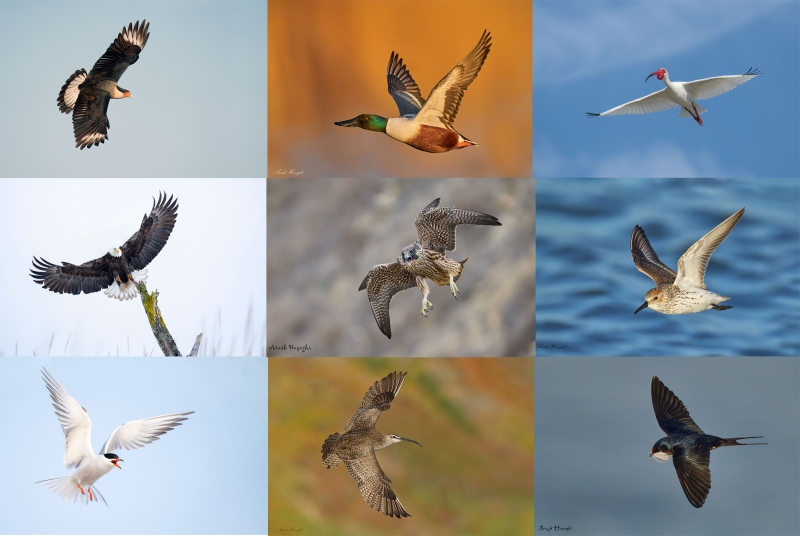

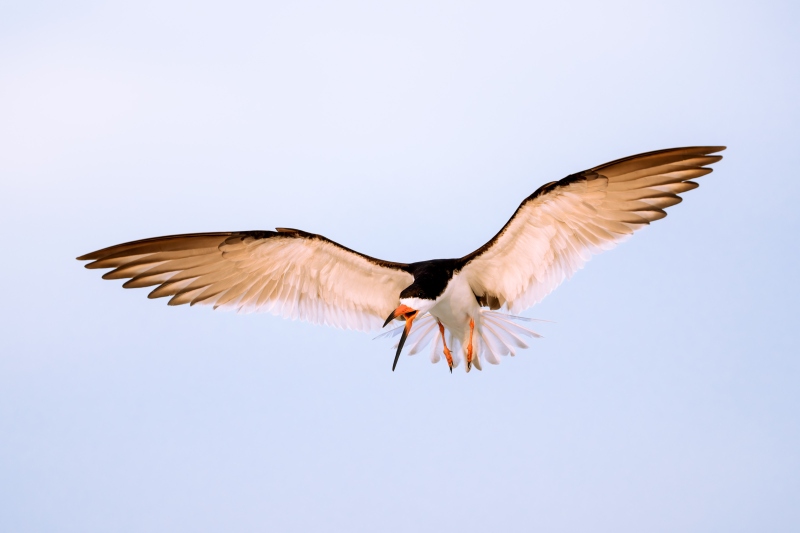
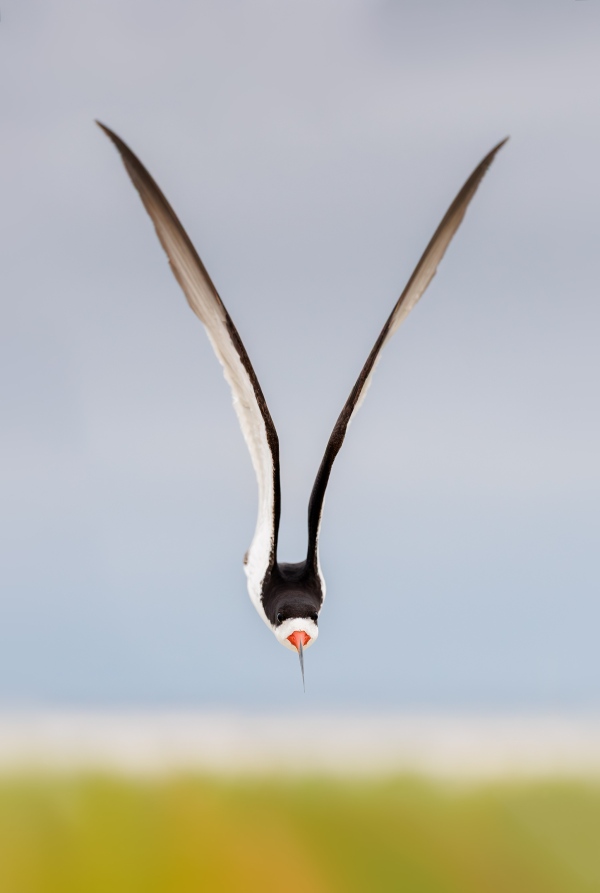
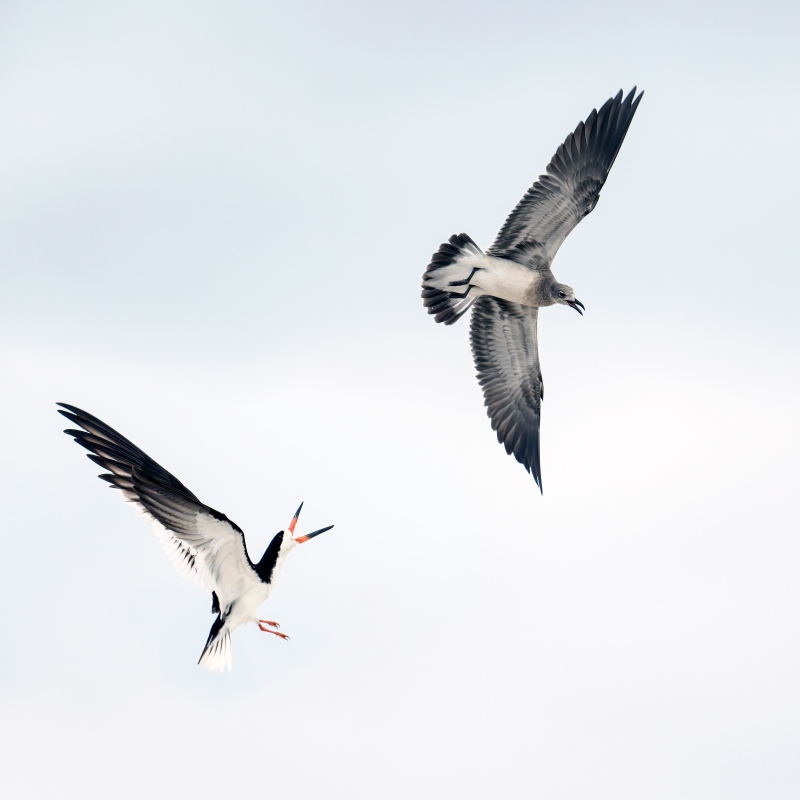
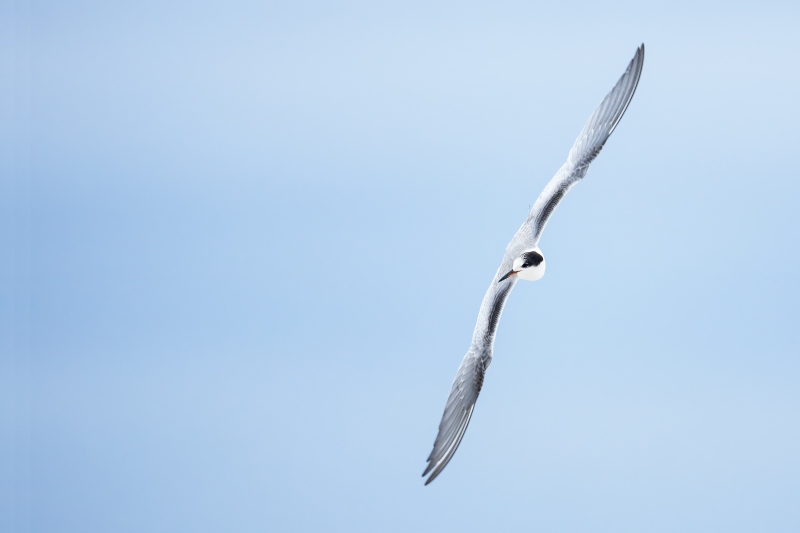
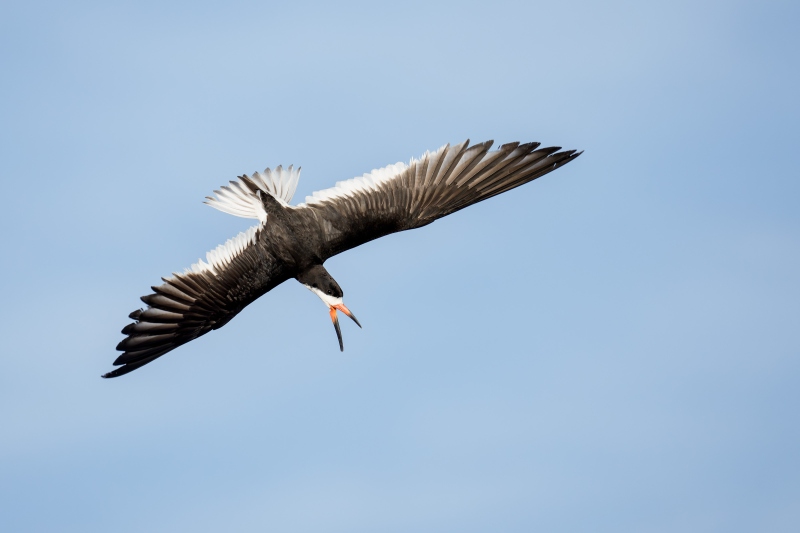
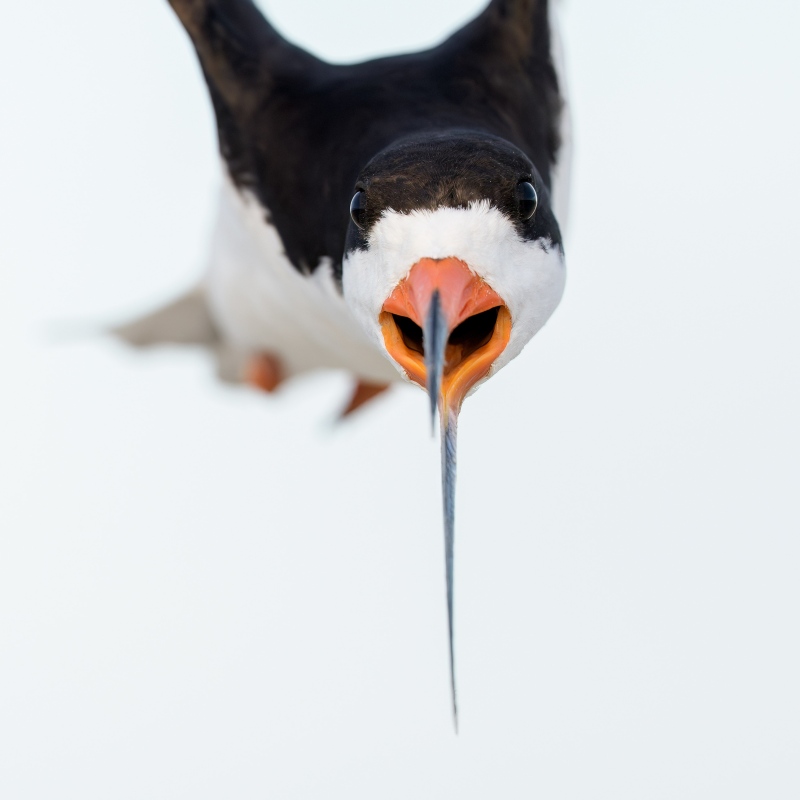
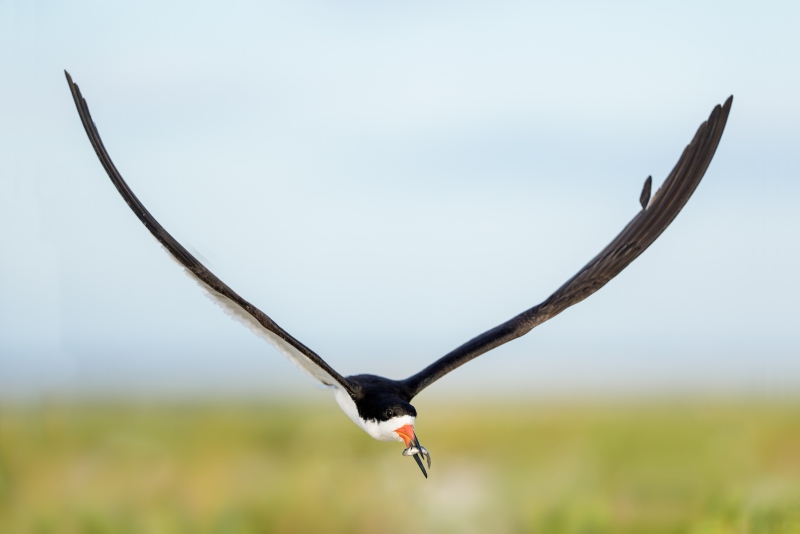
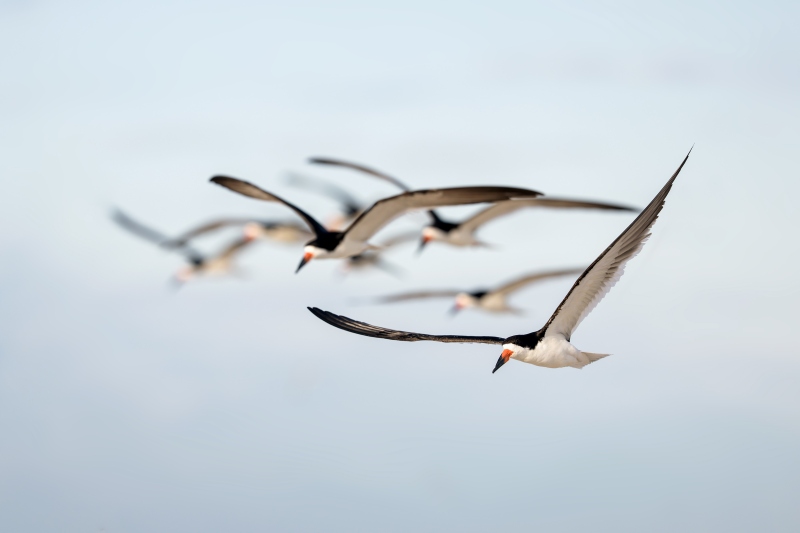
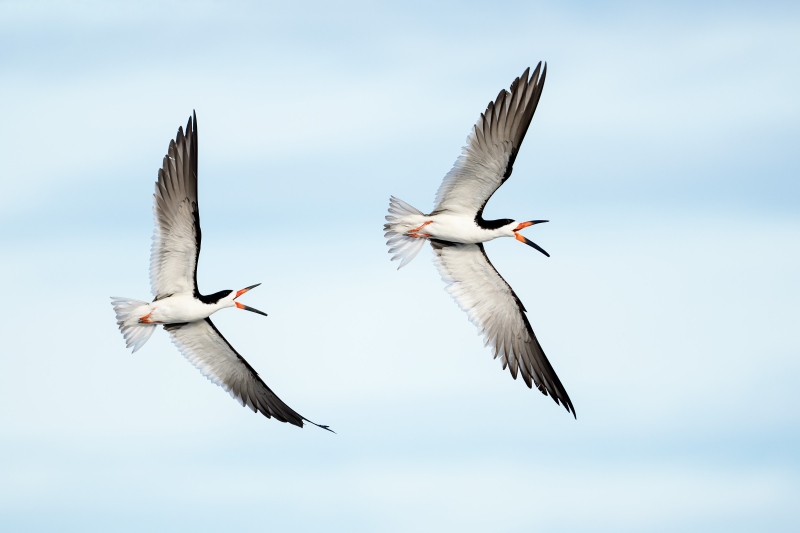
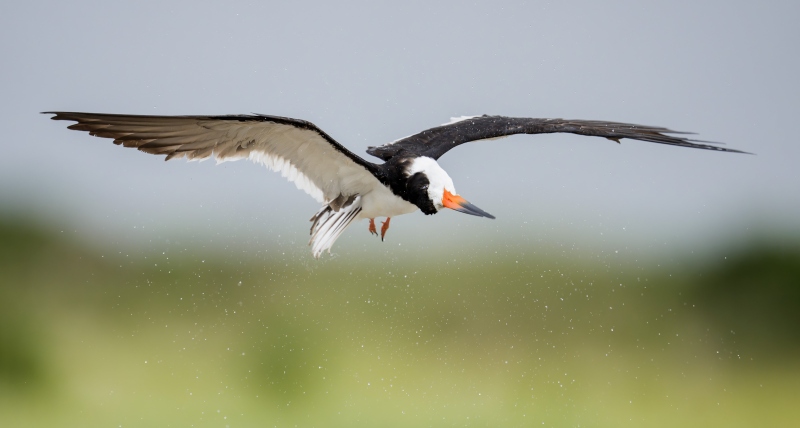
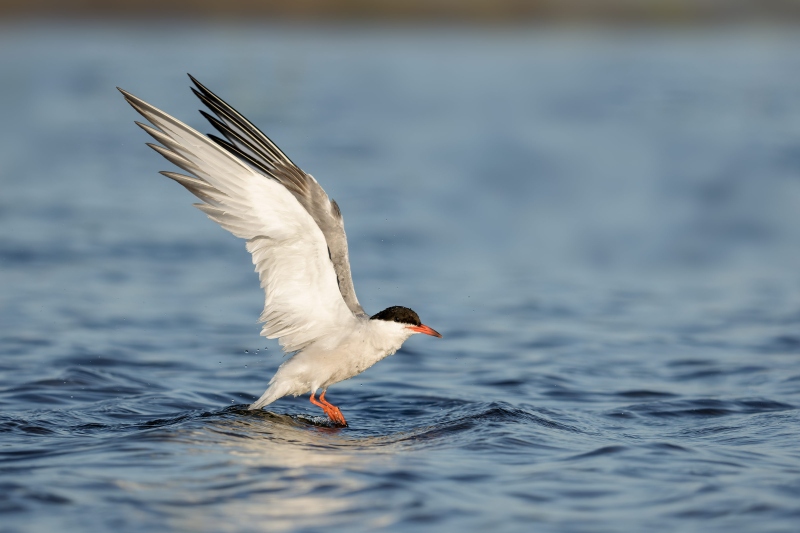
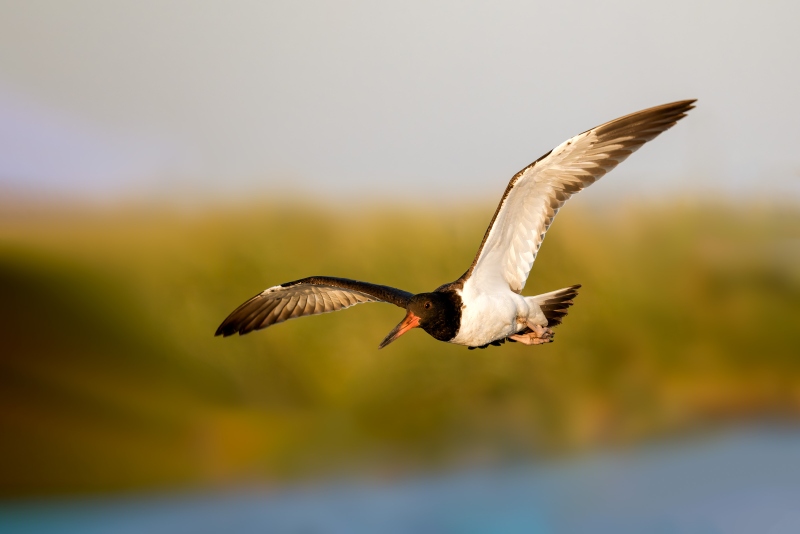
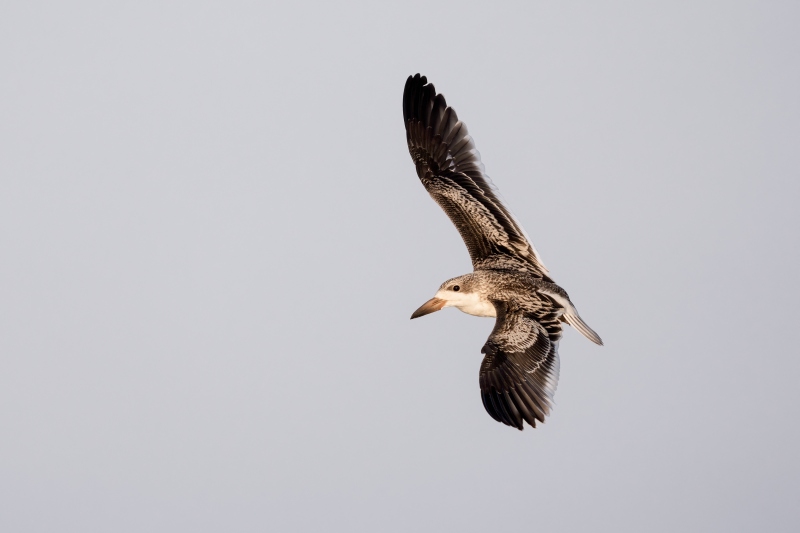









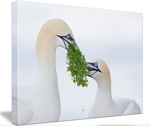



#10 for the composition of both birds with open beaks and being sharp in the frame.
#5 is my top choice for favorite because of the line the wings make and most of all the head turned over that line of the body and wing. Beautiful graphics. I’ve never seen that. Not sure but I might like it in a square crop. Other fave is #9. Best photo I’ve seen of a small flock.
Least fave is #11 because of black eye and black wing merging. Next is #12 because of no behavior. If you were lower the wing tips would have touched the dark area at the top.
My two favorites are #6, the skimmer in attack mode and #10, the two skimmers in flight. None of the images were “weak,” but my least favorites are #5 an #7.
Artie,
Many fine images. My fav is #9
Marr
Typo: some good opportunities with shot fast lenses.
Thanks and fixed.
a